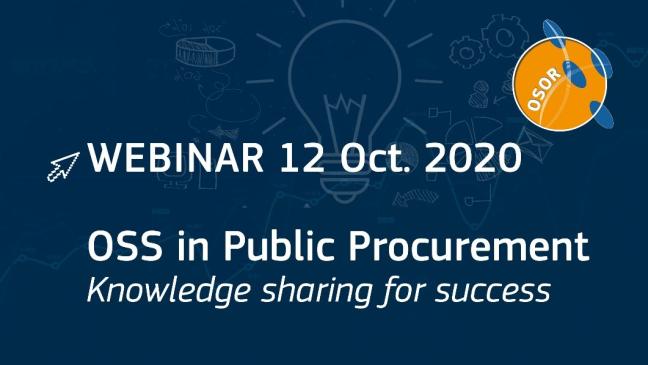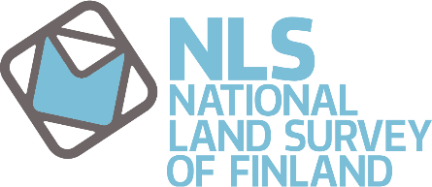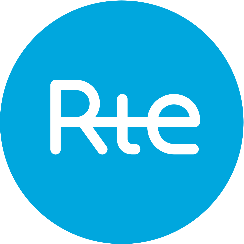The purpose of the webinar was to discuss and exchange best practices and practical solutions regarding the inclusion of open source software (OSS) in public procurement processes. Webinar participants had the chance to hear from Jani Kylmäaho, Director of Development and Digitalization at National Land Survey (NLS) of Finland, and Lucian Balea, R&D Program Director & Open Source Manager at Réseau de Transport de l’Electricité (RTE) in France, about their organisation’s approach and lessons learned regarding OSS and public procurement.

Webinar speakers’ presentations
Jani Kylmäaho, Director of Development and Digitalization at National Land Survey (NLS) of Finland

In the upcoming months, a tender for the core system with essential functionalities will be launched, followed by several tenders for additional system components. This approach requires public organisations to have internal expertise on software development.
Before procuring new software, public administrations have to take a strategic decision on the type of solutions they would like to deploy (e.g. to choose an open source architecture or to leave the decision to the tendering process where the result may be an open or closed solution). This initial choice will influence the rest of the procurement process. Then, when procuring new solutions, public administrations can take different approaches:
- Procure the key technologies and features that the new solution should include. Public authorities can then select the tendering method that best fits their needs, as follows:
- Tendering for an open source solution: this option requires in-house expertise to publish detailed and accurate technical specifications and to choose the key technologies underlying the solution. At the same time, it gives the organisation the opportunity to define the OSS’ overall architecture and the integration of the solution in the tender specifications. This kind of tender allows for co-funding schemes and crowdfunding.
- Tendering for product acquisition and development of any software: this option lets the market decide which software best fits the needs of the procuring organisation, regardless of whether it is proprietary or open source. Usually, fixed agreements are used for the duration of the contract and additional work must be purchased or tendered for. The final solution is tailored to the needs of the contracting organisation.
- Procure development personnel (and related skills) to support in-house software development. In this case, a public organisation can select development personnel with the most adequate qualifications and skills. In case the organisation requests a focus on open source in addition to the necessary software-related skills and expertise, the tender can also include a request for experience with open source projects/communities. Procurement of development personnel can be compatible with co-funding and crowdfunding schemes and be done through framework agreements or open competitions.
Finally, Jani believes it is crucial to give back to the open source community and maintain a positive relationship with similar public organisations. Fostering collaboration and communication provides more opportunities for software reuse and partnerships regarding the development of new OSS solutions.
Lucian Balea, R&D Program Director & Open Source Manager at Réseau de Transport de l’Electricité (RTE) in France

In the beginning, RTE did not have a structured approach for the use of OSS. After a strategic decision was taken to integrate OSS in some of RTE’s public tenders, the company adopted a gradual approach composed of the following steps:
- Understanding different open source licences, as well as improving their knowledge on legal and compliance issues
- Developing cross-sectoral knowledge on how to leverage open source
- Gaining executive support
- Building a community and governance framework
- Setting up an internal Open Source Program Office (OSPO)
- Changing the software development culture
- Adapting open source procurement practices.
RTE launched its first public procurement for an OSS solution in early 2019. The company decided to focus on the interoperability of OSS solutions. Thus, the framework of the solution and the majority of its components would be open source. RTE’s public procurement included requirements regarding the licensing of the solution and although a few vendors opted out from the public procurement procedure as the chosen open license was not aligned with their company policy, the outcome was described as ‘very satisfactory’ by Lucian.
Based on the legal analysis of this initial experience, RTE decided to adapt their procurement template to general OSS principles with the following elements:
- vendor-friendly open source licensing;
- provisions allowing for different types of code contributions;
- commitment from RTE to distribute bespoke developments and documentation under an open source licence.
Finally, Lucian underlined the importance of interacting with open source communities that have a clear and defined governance model to create trust among partners and attract contributors. The support of open source communities is a core element of the new public procurement process that RTE is currently defining.
Webinar discussion on OSS and public procurement
Jani and Lucian’s presentations initiated exchanges among webinar participants on solutions to the challenges faced by public organisations when including OSS in public procurement:
- Internal cultural change in favour of open source: to accompany a cultural shift towards open source within an organisation, it is best to adopt a step-by-step approach, reach out to external experts if needed, and ensure strong political support within the organisation.
- Open Source Programme Office (OSPO): for small and medium-sized organisations which do not have the resources for a dedicated team dealing with open source development, an OSPO plays a key role in building a network of people, identifying and proposing an open source strategy, and accompanying the organisation’s structural change. An OSPO also coordinates interaction and collaboration with external partner organisations.
- Long-term maintenance of the software: for Lucian, establishing a foundation can help ensure the long-term maintenance of the software, giving responsibility to the foundation for the oversight of the period between the conception and the deployment of the software. Another solution identified was the creation of a network of developers from different companies to develop the software, thus ensuring that multiple companies have in-depth knowledge of the software and can facilitate its reuse.
Download the webinar presentation below:

